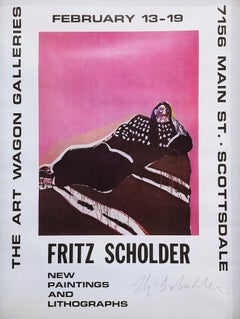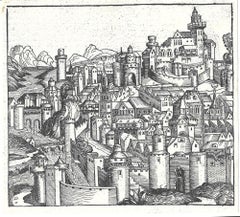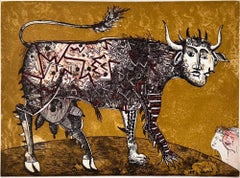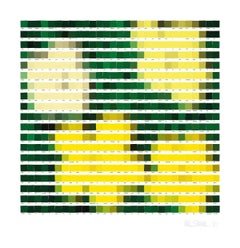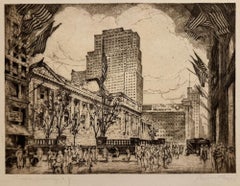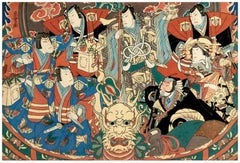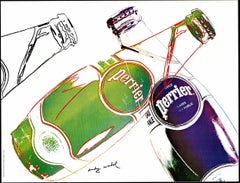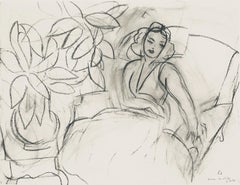Figurative Prints
1970s Expressionist Figurative Prints
Lithograph, Offset
Mid-19th Century Edo Figurative Prints
Woodcut
1930s Showa Figurative Prints
Woodcut
1980s Pop Art Figurative Prints
Offset
1960s Modern Figurative Prints
Lithograph
1940s Modern Figurative Prints
Lithograph
2010s Pop Art Figurative Prints
Silver
Mid-17th Century Old Masters Figurative Prints
Etching
1930s Showa Figurative Prints
Woodcut
Mid-20th Century Surrealist Figurative Prints
Lithograph
2010s Pop Art Figurative Prints
Varnish, Lithograph, Offset
Mid-20th Century Surrealist Figurative Prints
Lithograph
2010s Figurative Prints
Paper
2010s Pop Art Figurative Prints
Varnish, Lithograph, Offset
2010s Pop Art Figurative Prints
Paper, Varnish, Lithograph, Offset
16th Century Renaissance Figurative Prints
Woodcut
2010s Pop Art Figurative Prints
Lithograph, Offset
Late 20th Century Surrealist Figurative Prints
Lithograph
1960s Modern Figurative Prints
Lithograph
1970s Pop Art Figurative Prints
Pencil, Graphite, Lithograph, Offset
1980s Surrealist Figurative Prints
Etching, Aquatint
1960s Figurative Prints
Lithograph
1970s Surrealist Figurative Prints
Lithograph
20th Century Pop Art Figurative Prints
Screen
2010s Modern Figurative Prints
Glitter, Panel, Giclée, Screen
1960s Surrealist Figurative Prints
Etching, Lithograph
2010s Figurative Prints
Photographic Paper
2010s Contemporary Figurative Prints
Canvas, Giclée
2010s Contemporary Figurative Prints
Canvas, Archival Ink, Giclée
1980s Abstract Figurative Prints
Screen
1970s Surrealist Figurative Prints
Lithograph
2010s Contemporary Figurative Prints
Canvas, Archival Ink, Giclée
1990s Contemporary Figurative Prints
Offset
1940s Modern Figurative Prints
Etching, Aquatint
2010s Modern Figurative Prints
Glitter, Panel, Giclée, Screen
2010s Contemporary Figurative Prints
Archival Pigment
1950s Figurative Prints
Lithograph
1960s Abstract Figurative Prints
Etching
2010s Contemporary Figurative Prints
Offset
2010s Figurative Prints
Paper
1960s Figurative Prints
Lithograph
1950s Modern Figurative Prints
Lithograph
1970s Modern Figurative Prints
Lithograph
1960s Surrealist Figurative Prints
Woodcut
2010s Pop Art Figurative Prints
Silver
1970s American Modern Figurative Prints
Lithograph
1960s Figurative Prints
Lithograph
1960s Dada Figurative Prints
Color
2010s Contemporary Figurative Prints
Canvas, Archival Ink, Giclée
1980s Pop Art Figurative Prints
Offset, Lithograph
1960s Abstract Figurative Prints
Etching
1960s Surrealist Figurative Prints
Woodcut
1980s Conceptual Figurative Prints
Lithograph, Offset
1970s Abstract Figurative Prints
Lithograph
1960s Surrealist Figurative Prints
Woodcut
1930s Showa Figurative Prints
Woodcut
17th Century Old Masters Figurative Prints
Laid Paper, Handmade Paper, Engraving
1970s Figurative Prints
Lithograph
21st Century and Contemporary Abstract Figurative Prints
Etching
1970s Modern Figurative Prints
Woodcut
Decorating with Figurative Art Prints and Works on Paper
Bring energy and an array of welcome colors and textures into your space by decorating with figurative fine-art prints and works on paper.
Figurative art stands in contrast to abstract art, which is more expressive than representational. The oldest-known work of figurative art is a figurative painting — specifically, a rock painting of an animal made over 40,000 years ago in Borneo. This remnant of a remote past has long faded, but its depiction of a cattle-like creature in elegant ocher markings endures.
Since then, figurative art has evolved significantly as it continues to represent the world, including a breadth of works on paper, including printmaking. This includes woodcuts, which are a type of relief print with perennial popularity among collectors. The artist carves into a block and applies ink to the raised surface, which is then pressed onto paper. There are also planographic prints, which use metal plates, stones or other flat surfaces as their base. The artist will often draw on the surface with grease crayon and then apply ink to those markings. Lithographs are a common version of planographic prints.
Figurative art printmaking was especially popular during the height of the Pop art movement, and this kind of work can be seen in artist Andy Warhol’s extensive use of photographic silkscreen printing. Everyday objects, logos and scenes were given a unique twist, whether in the style of a comic strip or in the use of neon colors.
Explore an impressive collection of figurative art prints for sale on 1stDibs and read about how to arrange your wall art.
